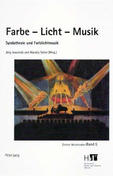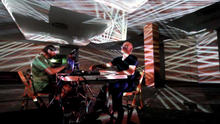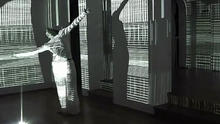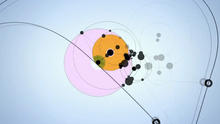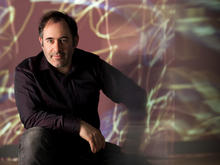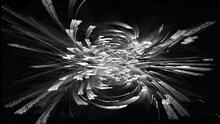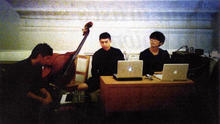Visual Piano
(2011)live performance by Kurt Laurenz Theinert in Ljubiljana, Slowenia. Music by Neža Naglič (keyboards).
Kurt Laurenz Theinert concentrates his work on visual experiences that do not refer to anything as images. He aims for the abstract reductive aesthetics, which, combined with his desire to dematerialise, ultimately brought him from photography to light.
Neža Naglič (keyboards) is a young Slovene improvisational musician. She is interested in exploring the sound capabilities of the piano that exceed its functionality and the tempered tuning. She reaches right into the heart of the instrument, sounding the strings and the body using various objects, including household objects and a janitor's tools.
Source: Kurt Laurenz Theinert
The visual piano is an instrument which makes it possible to create moving images in a space. It is unique and was conceived and developed by the photographer and light installation artist Kurt Laurenz Theinert in collaboration with the software designers Roland Blach and Philip Rahlenbeck.
Using a MIDI-keyboard it is possible to generate varying graphic patterns which can be digitally projected onto one or more screens. These dynamic and immediate drawings in light are not (as with VJ soft-and Hardware) generated by pre-recorded clips, but every moment of the performance is being played and modulated live and in real time via the keyboard and pedals.
Initially Theinert projected his drawings in light straight onto one screen; the expansion of the projection into 360° allows him to expand the visual experience of the audience into three dimensions. The intensified visual experience is astonishing: The defining edges of the darkened space are replaced by big, moving structures of light and the viewer gets immersed in a totally new cosmos of moving lines and fields of colour. The projection onto one screen was strongly reminiscent of constructivist painting and other modernist movements, the 360° projections generate architectural and technical associations. One is reminded of computer generated 3D simulations or laser beams. The symmetrical composition of the projection creates crystalline shapes that remind us of the design principles of Art-Deco or the utopian designs of expressionist architecture. At the same time the psychedelic colours quote the aesthetics of the Sixties.
Form and content are of one here. The visual piano performances explore professional contemporary artistic practice through the abstract, ephemeral medium of light, but at the same time they are consciously located in close proximity to the genre of serious entertainment.
(Winfried Stürzl)
Source: Kurt Laurenz Theinert
